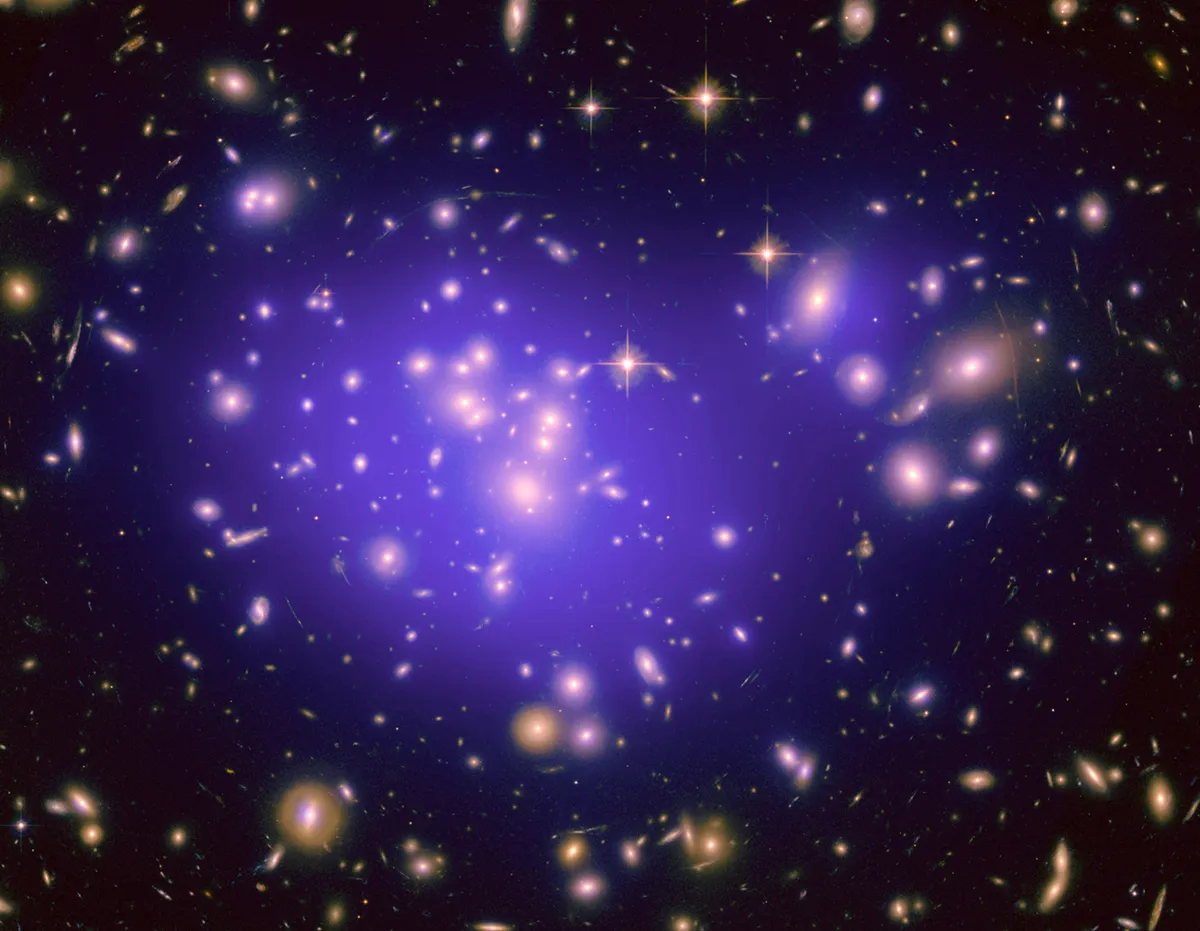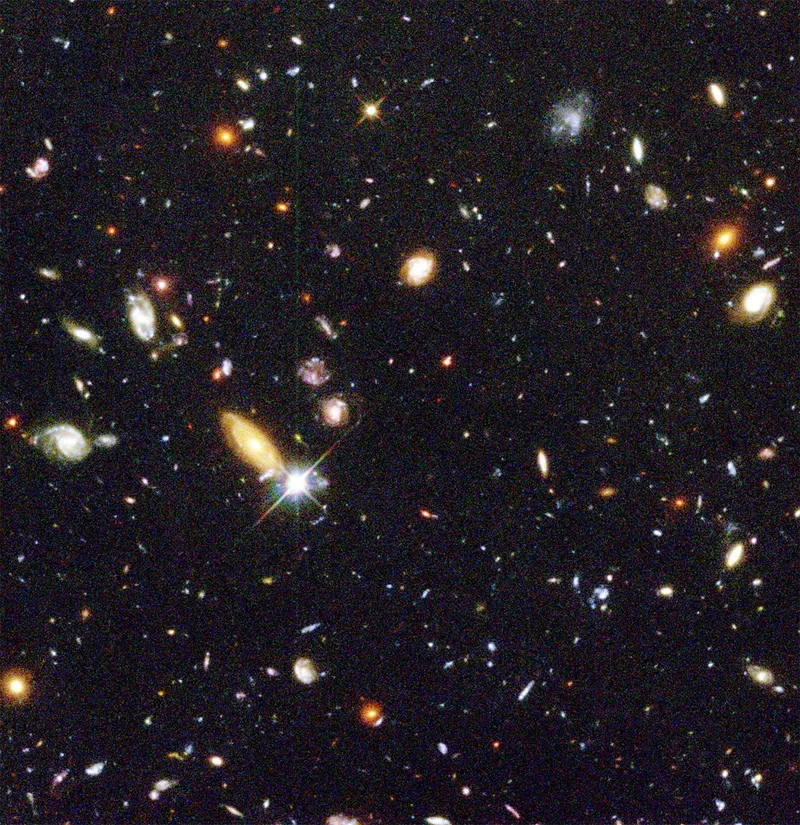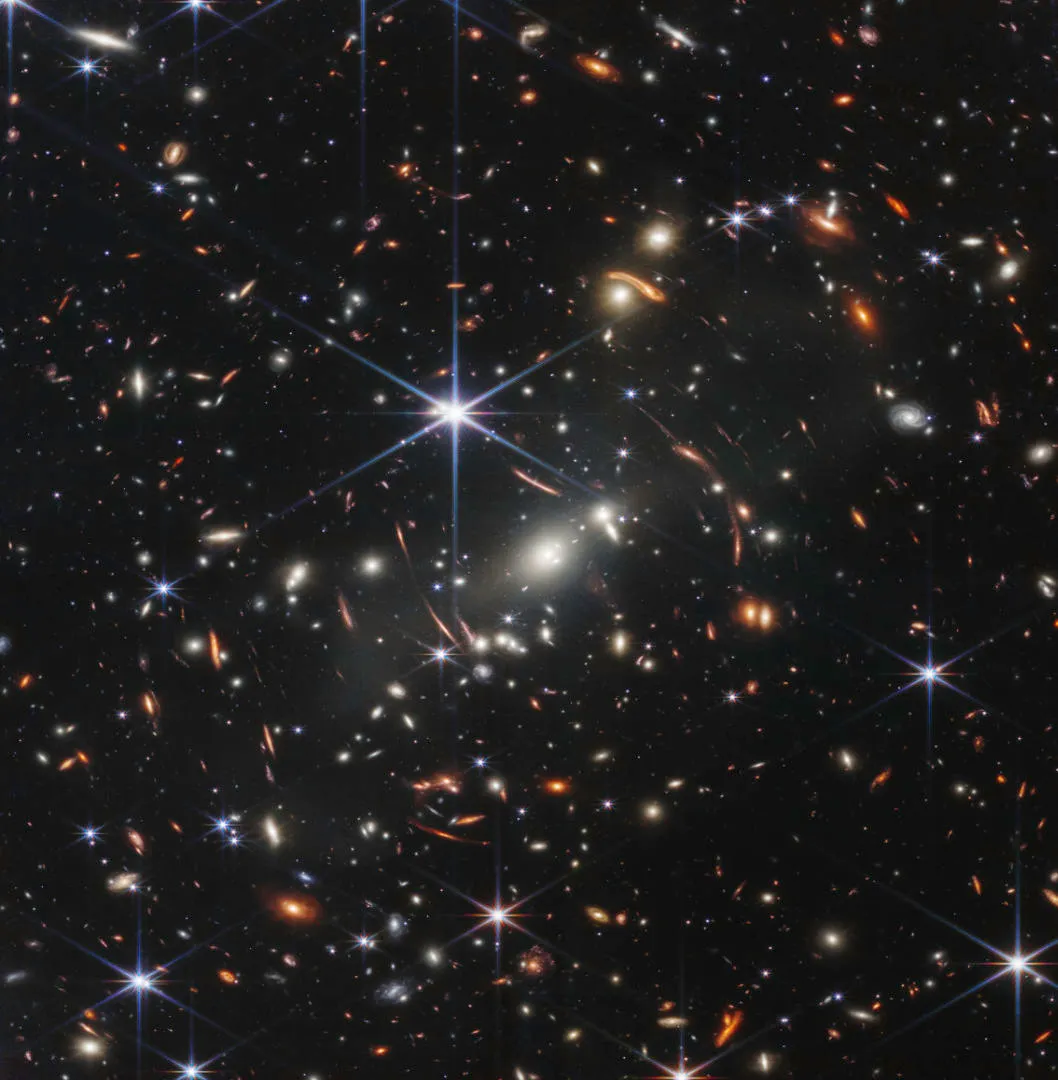A galaxy that shouldn’t exist is challenging astronomers’ understanding of how these enormous stellar structures grow in the early Universe.
Despite its relative youth, recent observations of galaxy JWST 7329 have shown it has far more stars than it should have had time to grow.
It was first spotted in 2010 in an infrared sky survey and immediately struck astronomers as being something special.
Ground-based follow-up observations proved inadequate, however, and astronomers had to wait until the James Webb Space Telescope (JWST) came online to take a spectrum of it.

Looking back in time
When we look at the night sky, we're looking back in time, since light from distant objects in the Universe takes a long time to reach us.
Galaxy JWST 7329 is so far away that we are seeing it as it was 11.5 billion years ago, just two billion years after the Big Bang.
Even at this tender age, the galaxy already has a stellar population that’s around 1.5 billion years old and has four times as many stars by mass as the Milky Way does today.
On top of this, the galaxy appears to have been quenched – meaning it has lost its cold gas, supressing star formation – for at least a billion years.
Several similar star-filled youngsters have been discovered in recent years, though JWST 7329 is the most extreme example uncovered so far.
Their existence is causing issues for cosmologists, as galaxies are thought to grow from structures known as dark matter haloes.

According to current theories, these structures shouldn’t have had enough time to grow to the size needed to create such massive galaxies so early in the Universe.
"Having these extremely massive galaxies so early in the Universe is posing significant challenges to our standard model of cosmology," says Claudia Lagos from the University of Western Australia, who worked on the study.
"More observations are needed to understand how common these galaxies may be and to help us understand how truly massive these galaxies are."
"JWST has been finding increasing evidence for massive galaxies forming early in time," says Karl Glazebrook from Swinburne University, who led the study.
"This result sets a new record for this phenomenon. Although it is very striking, it is only one object. But we hope to find more; and if we do this will really upset our ideas of galaxy formation."
Why observing the early Universe is so important

When it was revealed in 1997, the Hubble Deep Field instantly became an iconic image, transforming an apparently empty patch of sky to one alive with galaxies.
Yet it nearly didn’t happen. Having assumed that early galaxies would look and behave like those in the present day, astronomers predicted it would be a waste of time.
Now, discoveries like this one are teaching us the same lesson again.

The very early Universe is different from what we expected.
Maybe there’s something fundamentally wrong with our cosmology.
Maybe these galaxies are living their lives in an unexpected way.
Perhaps they’re forming different kinds of stars. We’ll find out more soon. Doesn’t everyone love to be surprised?
This article appeared in the April 2024 issue of BBC Sky at Night Magazine

